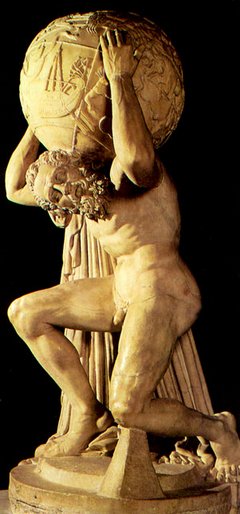3. I'm
sorry, I
made a
mistake,
it is
not easy
to think
straight
when
dealing
with
cyclical
time.
Sun is
rising
in the
east and
descending
in the
west.
Likewise
are the
stars
emerging
in the
east and
disappearing
in the
west.
This is
the
diurnal
cycle at
work.
Discussing
dates
involves
the
cycle of
the
year. I
have
seen, as
winter advances,
how
Orion
gradually
is moving
farther
and
farther
towards
the
horizon
in the
west. It
is the
same
direction
as in the
diurnal
cycle,
although
much
slower.
When I
can see
the stars in
the
night I
know Sun
has to
be on
the
other
side of
the
Earth,
moving
back
from west to
east.
The same
must be
true for
Orion
and the
other
stars
when
they
have
descended
in the
west.
Therefore,
when
Orion is
close to
Sun,
impossible
to see
because
the
constellation
is
rising
heliacally,
it will
continue
to be
invisible
for a
long
time
afterwards
- it
will
gradually
advance
across
the sky
roof
from
east to
west
during
the
daytime.
After I
have
seen
Orion
early in
the
morning,
before
Sun
makes
observations
impossible,
Orion
will
during
the
following
days -
given
observations
at the
same
time -
be
gradually
higher
up in
the sky,
steadily
advancing,
not far
from
Sun, towards
the
horizon
in the
west.
My
stumbling
block
was right
ascension,
which is
not
increasing
towards
the west
but
towards
the
east.
Sun is
advancing
among
the
zodiacal
constellations
towards
the
east,
not
moving
ahead
towards
the west
but
moving
withershins.
And the
arrow of
time is
always
moving
in the
same
direction:
At my suggested precessional time for the rongorongo texts Menkar happened to culminate in the night of the northern winter solstice and Alcyone 10 days later in 'December 31:
My table was not so misleading after all. When the Arabic manzil calendar has 136 days before its beginning in May 17 we could guess it was because the heliacal rising of Alcyone was thought to be a sign of the new year. But presumably it was because in May 17 the practically simultaneous Atlas would be rising the sky heliacally:
(Copied from Ian Ridpath's internet site.) | ||||||||||||||||||||||||||||||||||||||||||||||||||||||||||||||||||||

